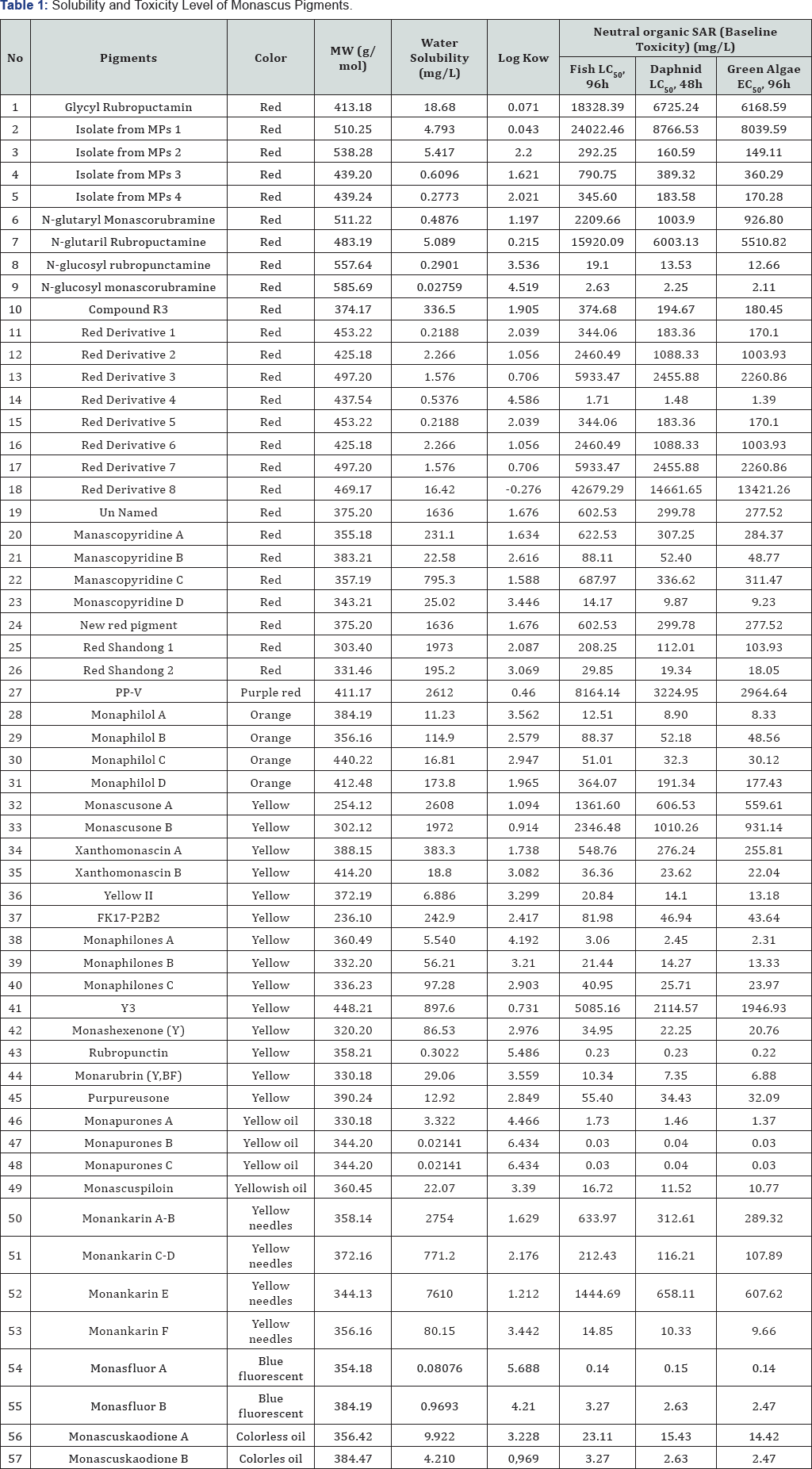Solubility and Toxicity Level of Monascus Pigments - Juniper publishers
Journal of Trends in Technical and Scientific Research
Abstract
Research on Monascus pigments (MPs) has been
progressing very rapidly. The progresses include the discovery of new
pigments and methods used for isolating and identifying the new
pigments. Currently, nearly fifty-seven new pigments have been found as
derivations of the six main pigments existed. The process of new
pigments discovery is unable to separate from that of fermentation or
isolation process. In several new pigments, there was no complete
information relating to solubility and level of toxicity. This research
covers data of all fifty-seven new pigments including color, molecular
weight, water solubility, log Kow (octanol-water partition coefficient),
and baseline toxicity level by Ecological Structure Activity
Relationships (ECOSAR) Program. These results are expected to give more
comprehensive data about Monascus pigments.
Keywords: Monascus pigments; Solubility; Toxicity; Ecosar
Introduction
Monascus Pigments (MPs) has long been used as a natural food colorant, especially in some Asian countries such as South China. Monascus produces red yeast rice, which is rice covered with a red Monascus
sp. Angkak can be used as a dye for yoghurt, bacon, and sausage and
also for the preservative of fruits, vegetables, and fish products [1].
The Ecological Structure Activity Relationships
(ECOSAR) is a computerized predictive system that estimates aquatic
toxicity. The program estimates a chemical's acute (short-term) Result
toxicity and chronic (long-term or delayed) toxicity to aquatic
organisms, such as fish, aquatic invertebrates, and aquatic plants, by
using computerized Structure Activity Relationships (SARs) [2].
Materials and Methods
Data collected from various studies that have been done before [3-5]
and added with some of the data from ECOSAR results. This toxicity test
on ECOSAR program was used to determine the toxicity against water
organisms.
Results

As shown in Table 1,
data showed that the lower log Kow of a compound, the lower of
toxicity. And from the toxicity point of view, those of compounds to
categorize having lower toxicity than others were LC50 and EC50
values>100mg/L. This was because the lower binding energy of a
compound, the stronger bond between the receptor and that compound. It
made the compound attach to biological membranes longer and more
toxicable [2].
Conclusion
Based on log Kow value of fifty-seven pigments of Monascus were determined, Red Pigment 8 has the lowest toxicity while Monapurones (B and C) have the highest toxicity.
To Know More About Trends in Technical and ScientificResearch click on: https://juniperpublishers.com/ttsr/index.php
To Know More About Open Access Journals Please click on:



Comments
Post a Comment